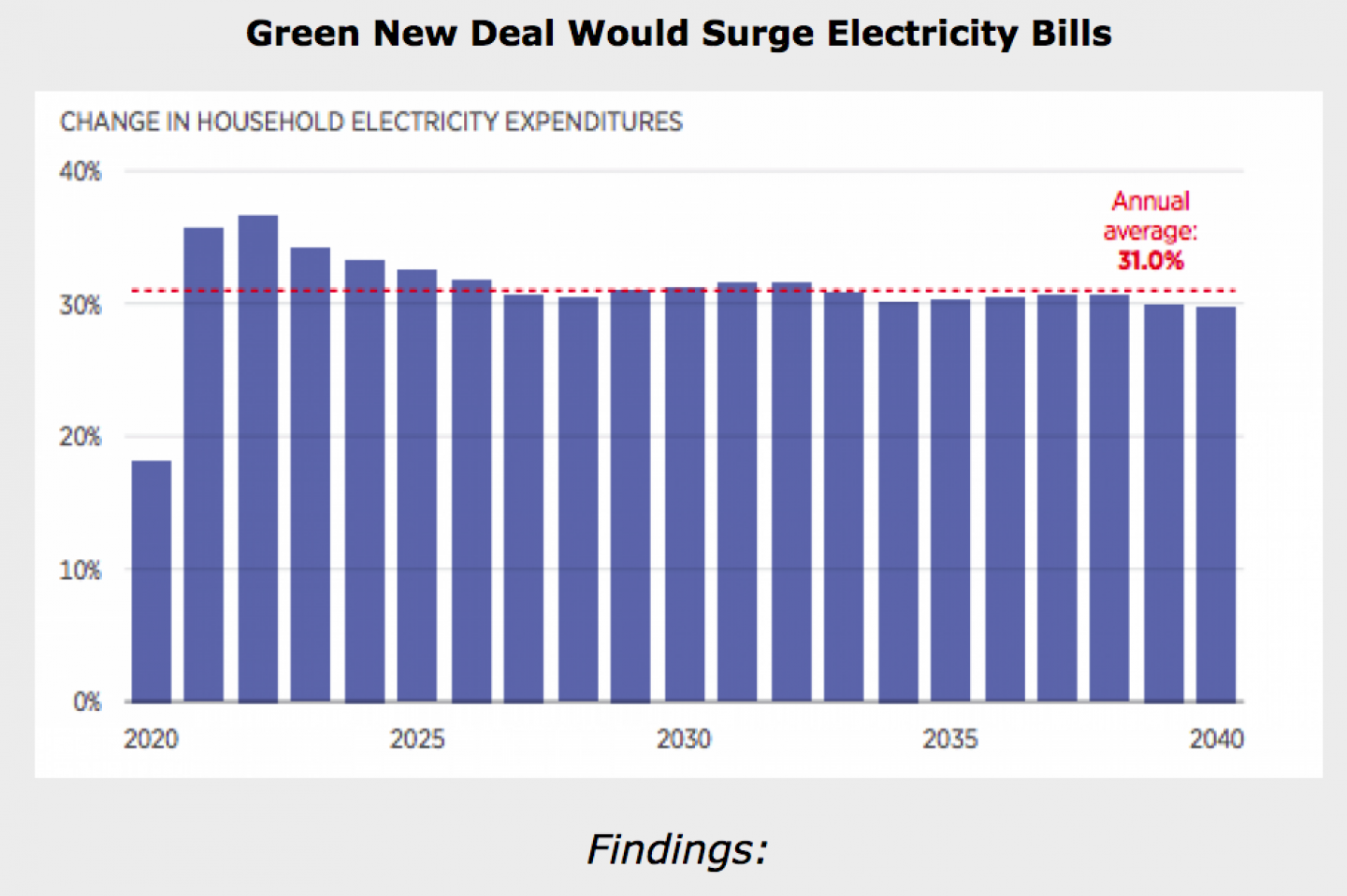Assessing the Costs and Benefits of the Green New Deal’s Energy Policies
Bottom Line: More than just a climate-energy plan, the “Green New Deal” actually seeks to fundamentally restructure the American economy. Yet, despite the hype from policymakers and the media at-large, the “Deal” would be incredibly costly for American families and businesses, with virtually zero climate benefits. For example, the current analysis finds that even under the most modest estimates, just one part of the Green New Deal would cost an average family $165,000 and wipe out 5.2 million jobs. Indeed, in reality, the Green New Deal is simply just a Really Bad Deal for the country and far better paths exist. Removing government-imposed barriers to energy innovation, for instance, would foster a stronger economy and, in turn, bring a cleaner environment.
In 2019, Representative Alexandria Ocasio-Cortez (D–NY) and Senator Ed Markey (D–MA) released their plan for a Green New Deal in a non-binding resolution.
The Green New Deal is much more than just an energy and climate policy; it is a plan to fundamentally restructure the American economy.
For example, as stated in the resolution, “climate change, pollution, and environmental destruction have exacerbated systemic racial, regional, social, environmental, and economic injustices.”
Two of the main goals of the Green New Deal are to achieve global reductions in greenhouse gas emissions of 40% to 60% (from 2010 levels) by 2030 and reach net-zero emissions worldwide by 2050.
The Green New Deal’s emission reduction targets are meant to keep global temperatures 1.5 degrees Celsius above pre-industrial levels.
To provide a broad estimate of the costs, the current analysis models the economic impact of an entire series of economy-wide carbon taxes, each increasing the tax gradually over time.
Not surprisingly, the Green New Deal would surge energy costs and be incredibly costly for American families and businesses – all for no meaningful climate benefit.
To illustrate, under the Green New Deal, the typical family of four would lose an average of nearly $8,000 in income every year, or a total of more than $165,000 through 2040.
Moreover, the plan would introduce a completely new level of cronyism and corporate welfare that would harm consumers multiple times over.
The policies proposed in the Green New Deal would disrupt energy markets and skew investment decisions toward politically connected projects, as has been the case with politically favored energy projects in the past.
America has much better climate-energy options to purse.
Removing government-imposed barriers to energy innovation, for instance, would foster a stronger economy and thereby help to install a cleaner environment.
Read the full study here.

- The Green New Deal is not a climate change plan but a plan to fundamentally restructure the American economy and would be incredibly costly for American families and businesses, all coming with about zero climate benefits.
- The Green New Deal would cause an overall average shortfall of over 1.1 million jobs; a peak employment shortfall of over 5.2 million jobs; a total income loss of more than $165,000 for a family of four; an aggregate gross domestic product loss of over $15 trillion; and increases in household electricity expenditures averaging 30%.
- The U.S. has much better options than the Green New Deal, such as removing government-imposed barriers to energy innovation to foster a stronger economy and cleaner environment.




